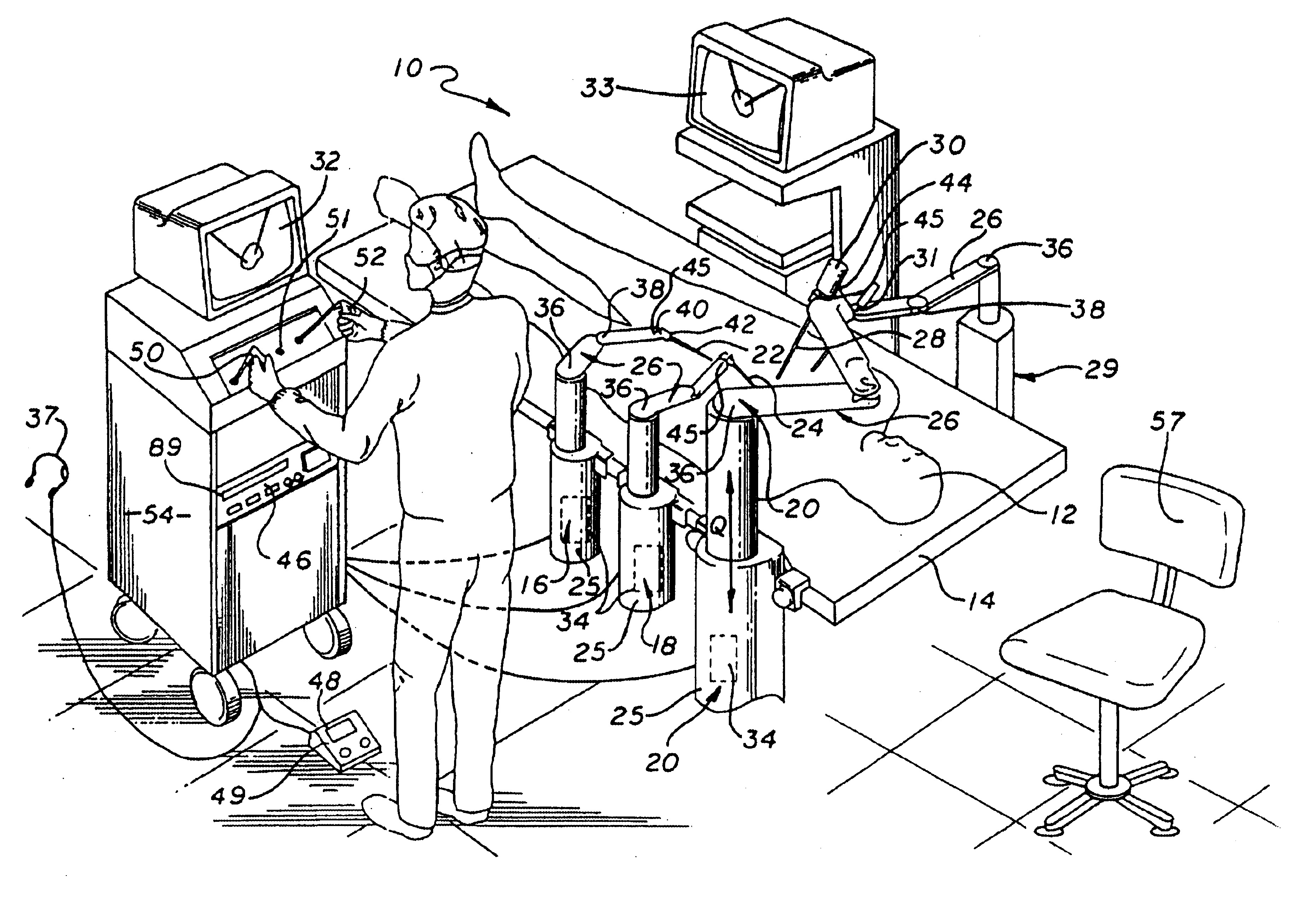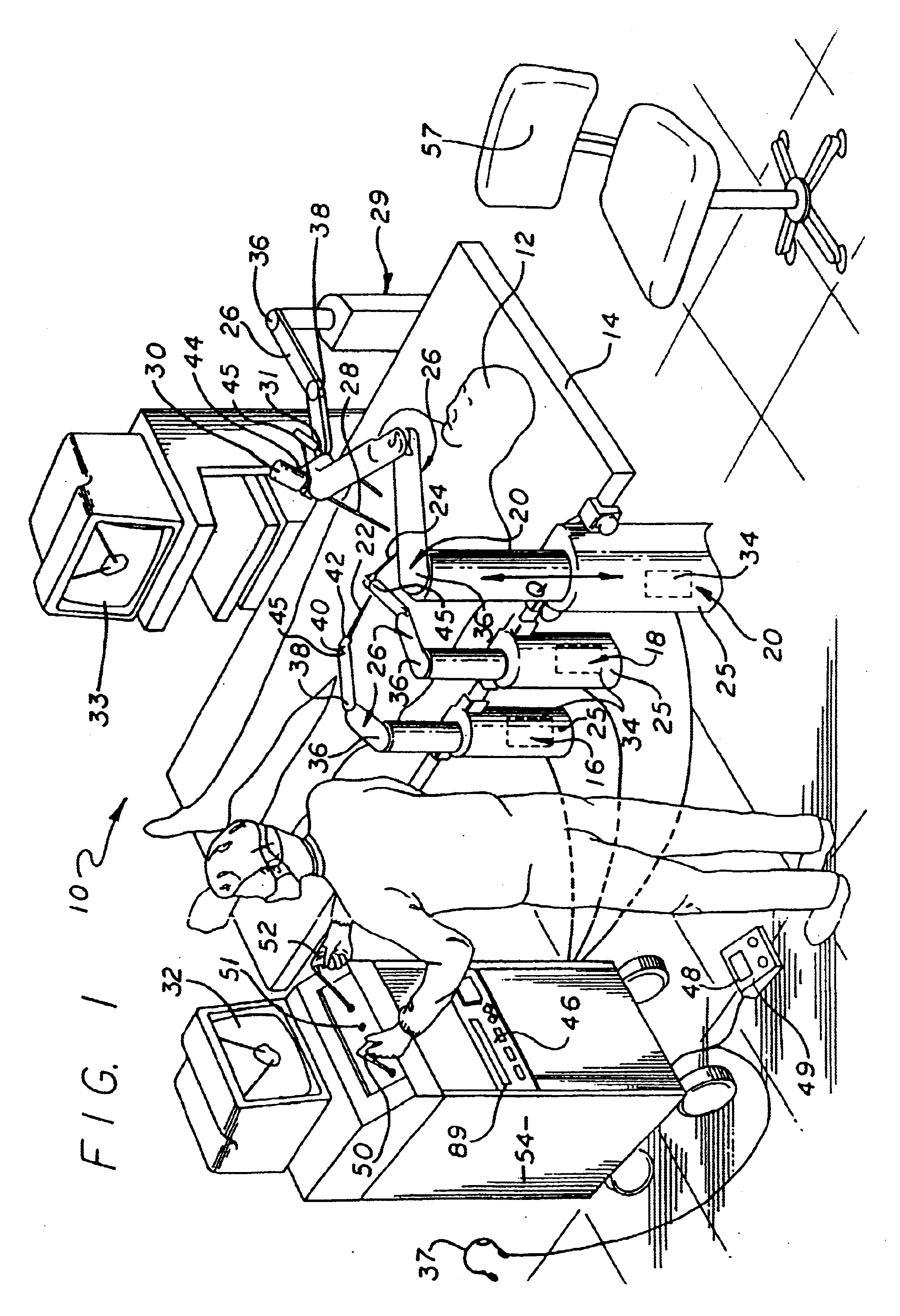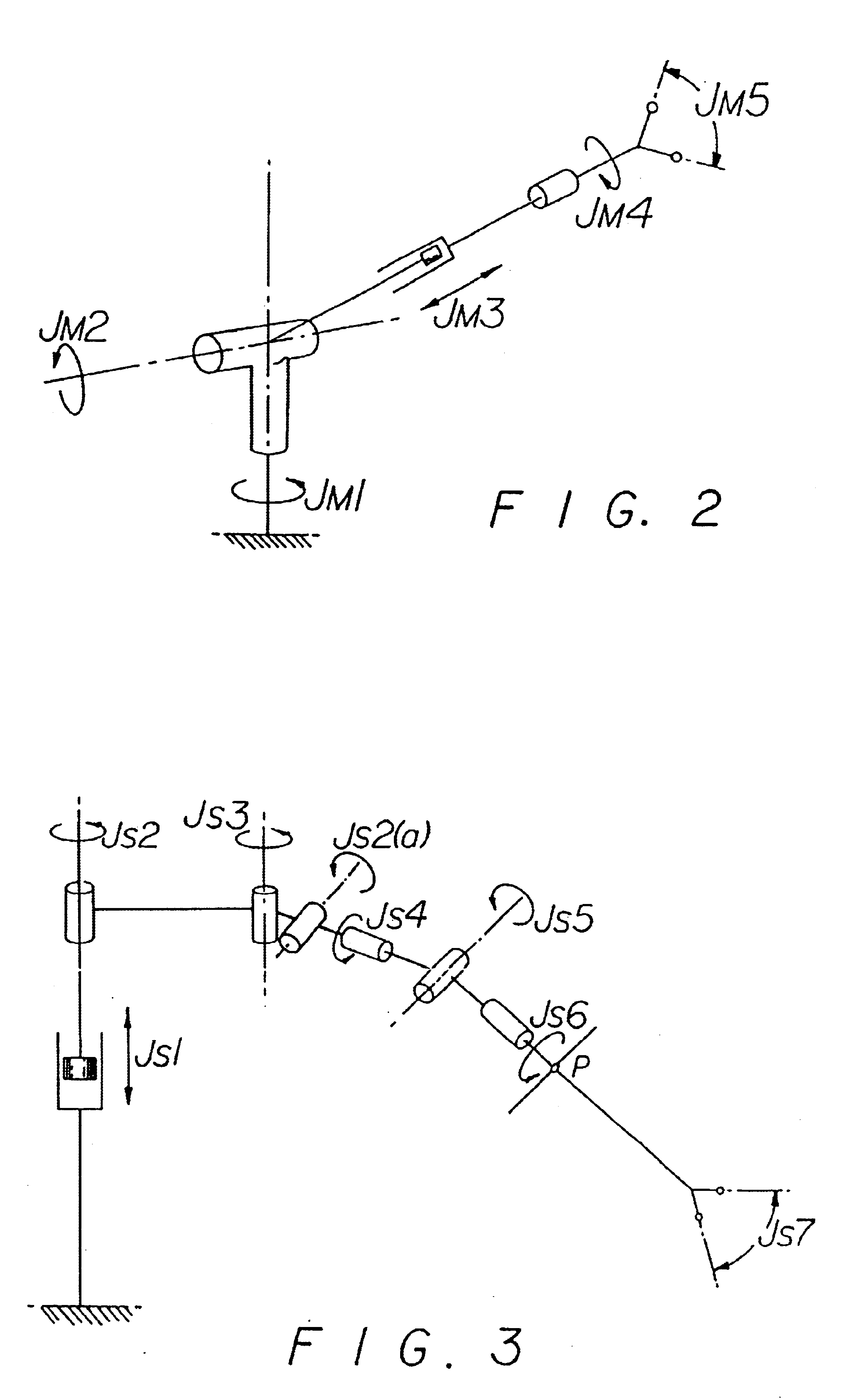Method and apparatus for performing minimally invasive surgical procedures
a surgical procedure and minimally invasive technology, applied in the field of robotic systems and surgical instruments, can solve the problems of prolonging the recovery period of patients, reducing the precision of positioning, and reducing the trauma of patients, so as to reduce the trauma of patients and prolong the recovery period. , the effect of reducing the time of operation
- Summary
- Abstract
- Description
- Claims
- Application Information
AI Technical Summary
Benefits of technology
Problems solved by technology
Method used
Image
Examples
Embodiment Construction
[0065]Referring to the drawings more particularly by reference numbers, FIG. 1 shows a system 10 that can be used to perform minimally invasive surgery. In a preferred embodiment, the system 10 may be used to perform a minimally invasive coronary artery bypass graft, or Endoscopic coronary artery bypass graft (E-CABG) and other anastomostic procedures. Although a MI-CABG procedure is shown and described, it is to be understood that the system may be used for other surgical procedures. For example, the system can be used to suture any pair of vessels as well as cauterizing, cutting, and radiating structures within a patient.
[0066]The system 10 is used to perform a procedure on a patient 12 that is typically lying on an operating table 14. Mounted to the operating table 14 is a first articulate arm 16, a second articulate arm 18 and a third articulate arm 20. The articulate arms 16-20 are preferably mounted to the table so that the arms are in a plane proximate the patient. It is to b...
PUM
 Login to View More
Login to View More Abstract
Description
Claims
Application Information
 Login to View More
Login to View More - R&D
- Intellectual Property
- Life Sciences
- Materials
- Tech Scout
- Unparalleled Data Quality
- Higher Quality Content
- 60% Fewer Hallucinations
Browse by: Latest US Patents, China's latest patents, Technical Efficacy Thesaurus, Application Domain, Technology Topic, Popular Technical Reports.
© 2025 PatSnap. All rights reserved.Legal|Privacy policy|Modern Slavery Act Transparency Statement|Sitemap|About US| Contact US: help@patsnap.com



